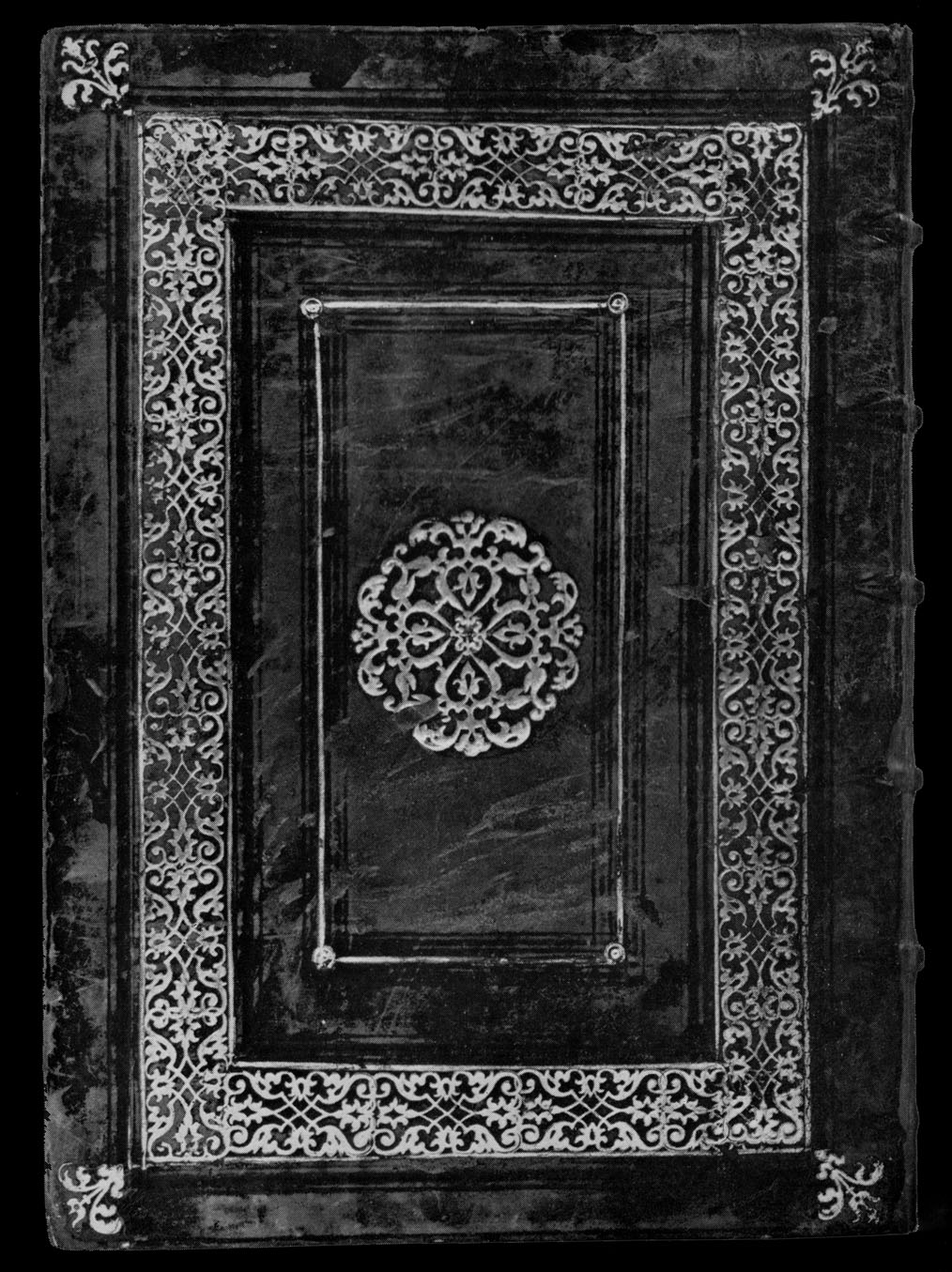

|
The reproduction of the binding shown above is from a British Museum publication entitled: Bookbindings from the library of Jean Grolier : a loan exhibition, authored by
H. M. Nixon in1965, this is his binding example 13, (PL. XIII) Nixon attributes this binding to the Fleur-de-lis binder. Below is his description of it.
|
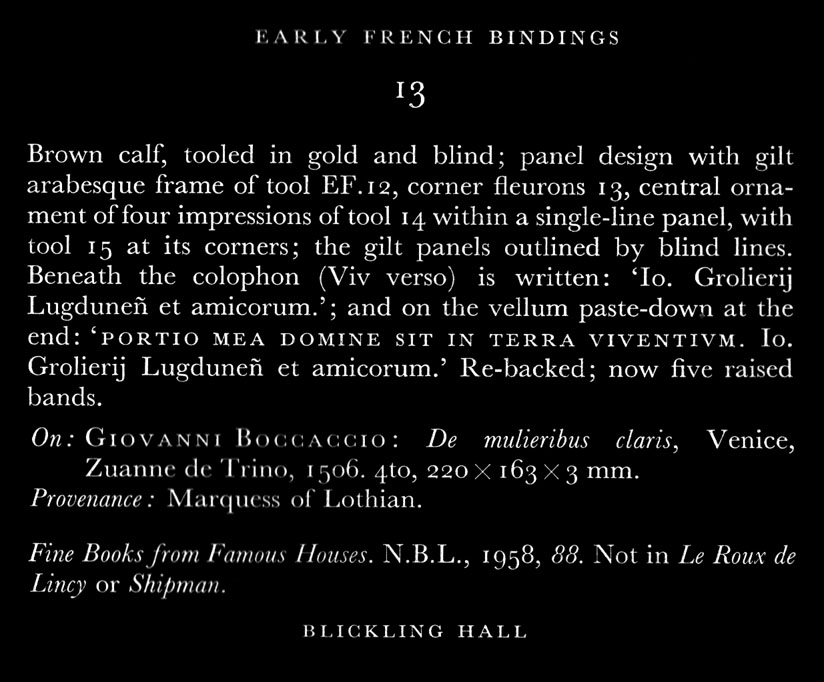
| Nixon's binding example 13 is linked to another important key example through the central ornament consisting of four impressions of tool EF. 14. Below I show this binding (Davis366) along with a Comparative Diagram of EF. 14. |
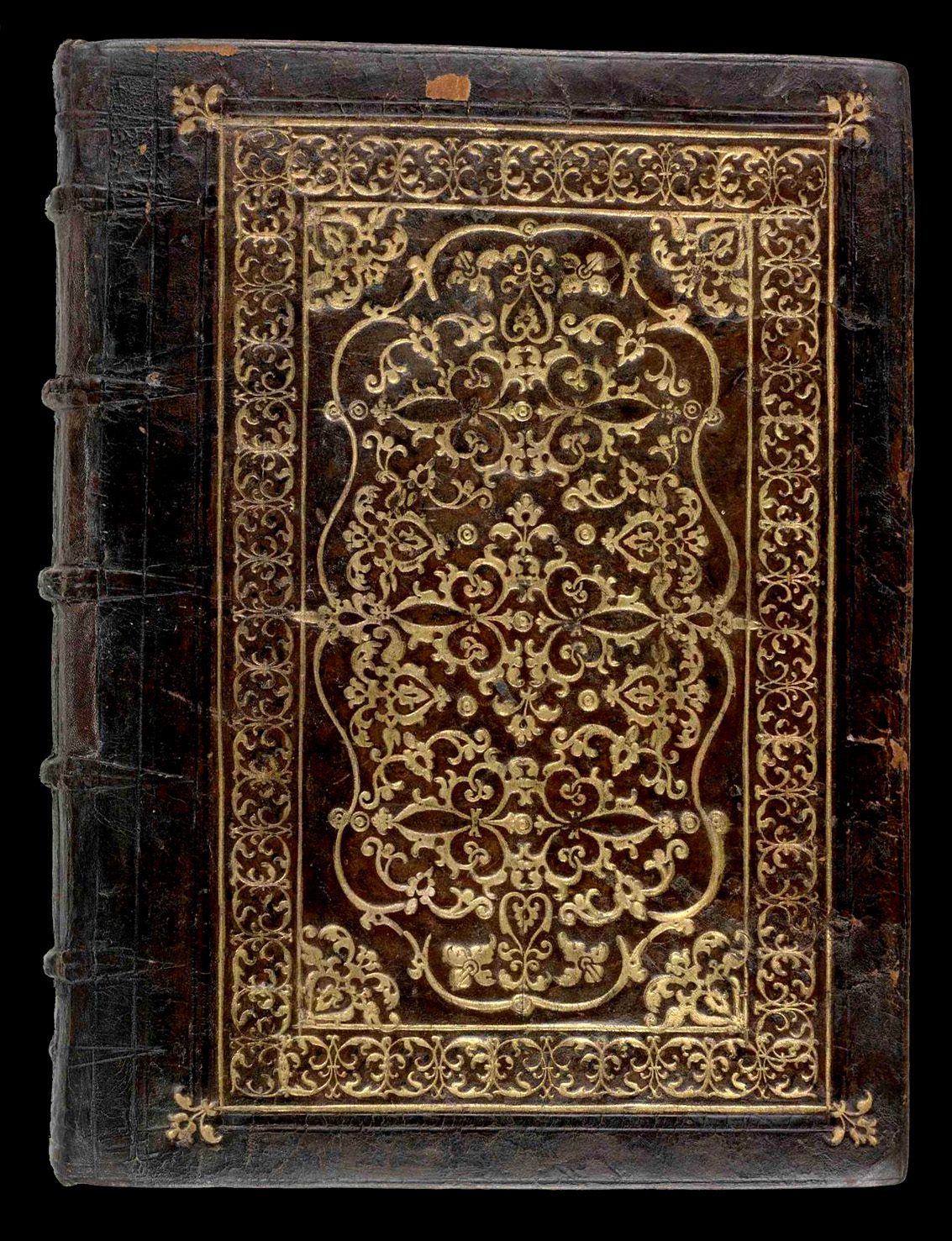
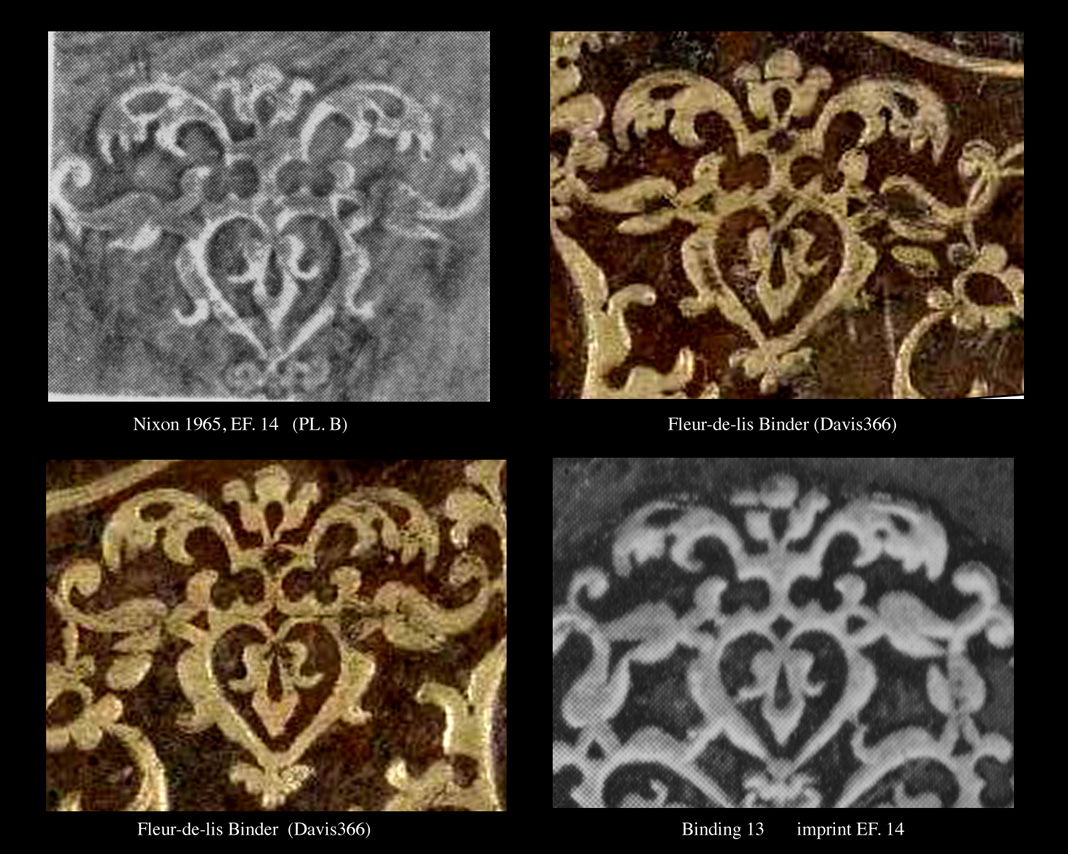
| There are a number of different tool imprints found on Davis366 that Nixon did not include in his catalogue of Fleur-de-lis binder imprints. His numbers end at 25, so I will add these others as 26, 27... etc. |
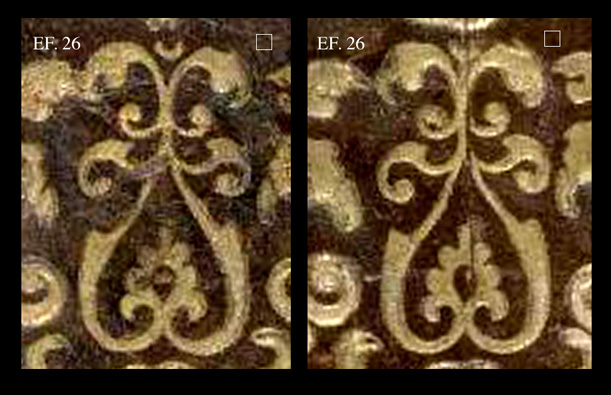
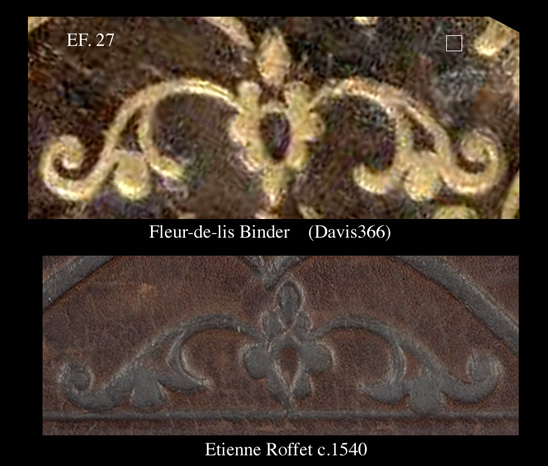
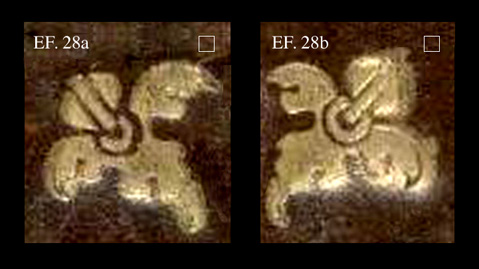
| Nixon has grouped together two pairs of imprints as EF. 11a and EF. 11b. I show just the flower as 28a and 28b. They can be seen as separate units on Davis366. I have recently seen a Picard binding that is quite a surpise it has the same type of plaque and these flowers! |
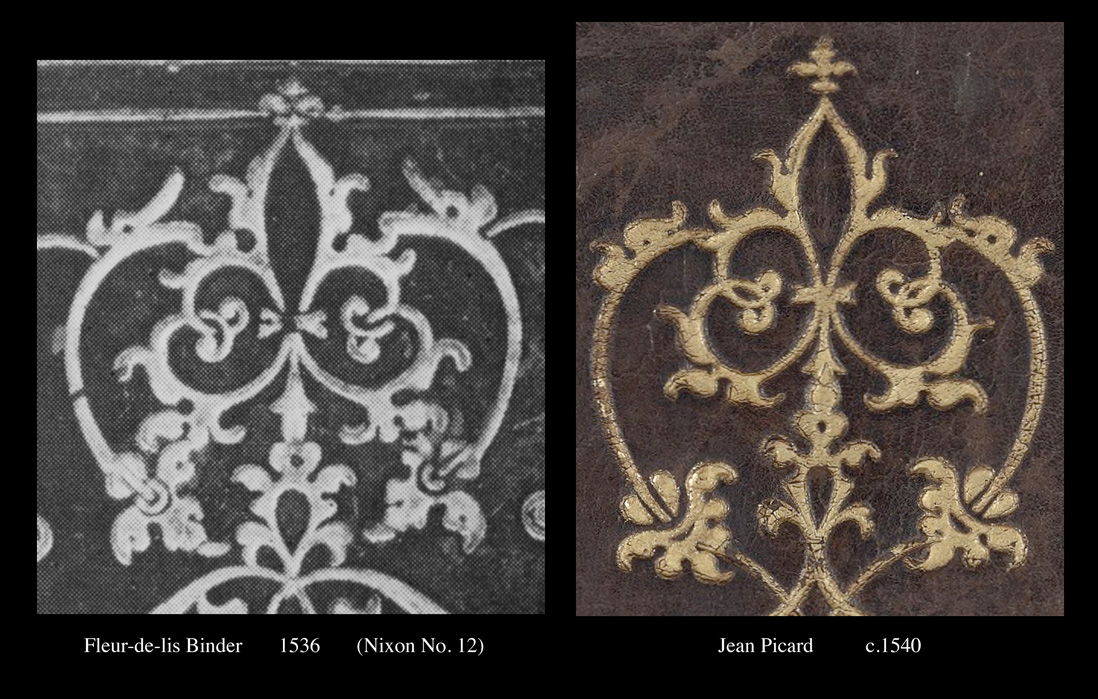
| In Comparative Diagram 5, I show the central ornament from Nixons Fleur-de-lis Binder example binding number 12, this ornament is described by him as being composed of EF. 6, 7, 8, 9, 10, 11a and 11b (also 28a and 28b). This binding is one of the famous Bayfius examples and Nixon considers that they may have been made not long after the publication of the book 1536 (click here to see this reference). The Picard example shown in Comparative Diagram 5, can be seen here at the BnF site. They show Picard's activity as starting at 1540 and the Fleur-de-lis Binder activity ending in 1540. This gives me an idea to explain such obvious copying by Picard. We know that Picard started his business arrangements with Grolier in 1540 when he took over the Aldine shop in Paris. Imagine that Grolier's main binder was the Fleur-de-lis binder and suddenly he was unable to continue making Grolier's bindings. Grolier needed to find a new binder but he wanted to have bindings that looked exactly like the previous work so there would be a continous uniformity in his collection. He asked Picard to copy the tools and designs of the Fleur-de-lis binder... this would explain everything! |

| Nixon did not catalogue this tool shown in Comparative Diagram 6 as EF. 29. Because of the overlapping it is not easy to isolate and it would be hard to make a rubbing of it, I copied a number of examples and tried to make a virtual imprint of this tool, the result is a composite reconstruction that is not 100% accurate but will serve as rough guide. |
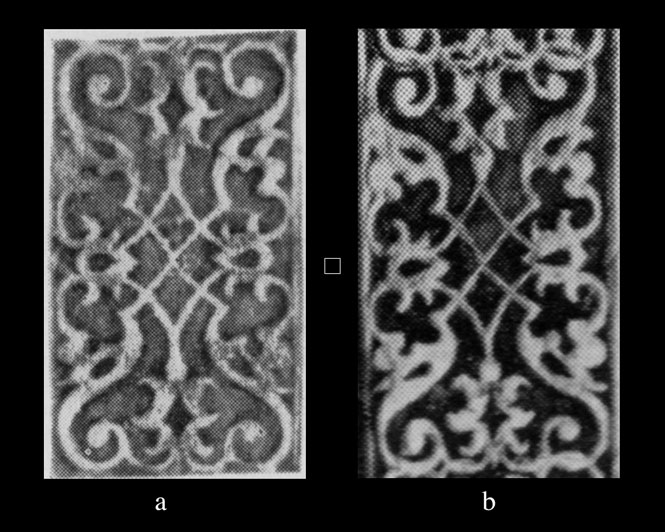
| Now I want to return to binding number 13, shown at the top of the page, for some unknown reason Nixon opted to display imprint EF. 12 in a vertical position. The symmetry of this tool is a bit wanting however I suppose that adds to it's charm. |
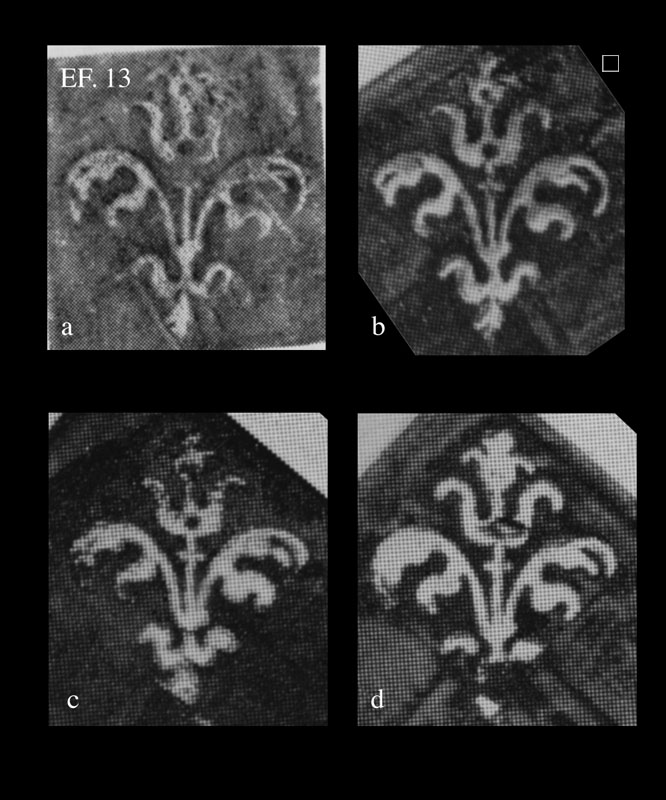
| Finally I come to tool EF. 13, the fact that it is found on binding example number 13 may be more than just a coincidence, and smacks of mysterious connotations. This fabulous shape, no doubt derives from an inspiration related to grotesque art, and or perhaps from some profound subconscious archive of archetypal imagery locked in the human psyche. Iconic with its cross, we need to find more of these... as if in a dream I seem to remember seeing it before, somewhere... |
| information about the author | return to the home page of VIRTUAL BOOKBINDING |